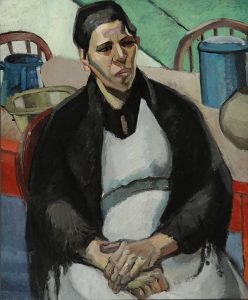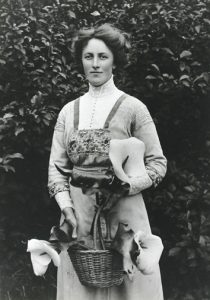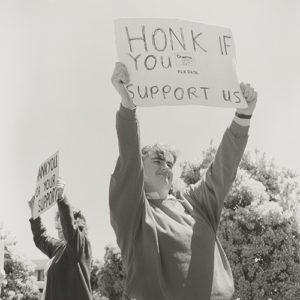18 Jul Women’s stories at the Sarjeant
On the 125 year anniversary of women’s suffrage in New Zealand, two exhibitions dovetail to honour the journey of women
Edith Collier: Ahead of her time (30 June – 4 November 2018)
125: Women from the Collection (15 Sept – 17 February 2019)
The permanent collection of the Sarjeant Gallery Te Whare o Rehua Whanganui houses the largest public holding of works by the New Zealand Modernist painter Edith Collier. The permanent collection holds in excess of four hundred and fifty Edith Collier drawings, wood cuts and paintings.
Jennifer Taylor Moore, Curator of Collections at the Sarjeant Gallery in Whanganui has selected eleven works by Collier to be showcased in Edith Collier: Ahead of her time a progressive exhibition which demonstrates the artist at several key points in her artistic output.
Jennifer Taylor Moore says “The works on display clearly demonstrate Collier’s awareness of early 20th century European art and the development of her own unique Modernist aesthetic. Edith is increasingly being identified as one of New Zealand’s early Modernist women painters”
Edith Collier was born in Whanganui in 1885 and was the eldest of nine surviving children. Her father was a music teacher, entrepreneur and substantial landowner. The family was very musical with Edith an accomplished cellist in the family’s chamber music quartet.
As an artist she showed early promise and in 1913, after exhausting Whanganui’s art tuition possibilities, she travelled to England to study at the St Johns Wood School of Art in London.
There she found her independence travelling and painting in Ireland, and around London, Cornwall and the Cotswolds alongside other expatriate teachers and peers such as Margaret McPherson (Preston) from Australia and the New Zealander Frances Hodgkins.
Collier’s output was prolific during her nine years in the United Kingdom and her exhibitions were positively received. Her letters home indicate she was happy – she said in one early postcard home to her brother ‘I am just in full swing now’… ‘never had such a time in my life, working all the time.’
But Edith was still financially dependent on her parents and in 1921 she was compelled to return home to Whanganui to her family. As an unwed woman her independence and choices were limited and as the eldest daughter of a large family they increasingly turned to her for assistance.
On her return, Collier continued to paint when family obligations allowed and in 1927 she visited Kawhia. The resulting works from that trip are seen as some of her most successful New Zealand paintings and feature in Edith Collier: Ahead of her time.
Collier exhibited in New Zealand but her Modernist paintings were consistently met with incomprehension. The art world in New Zealand at the time was very conservative and tended to focus on the British academic tradition. Embarrassment caused to the family by hostile reviews eventually led her father to destroy a number of Collier’s studies including her female nudes.
Edith Collier’s life and work reflects the impact of the values and attitudes towards women of her time. The isolation of conservative Whanganui and New Zealand from the international art world was a challenge that very few women artists at that time were able to overcome.
Collier deserves recognition for her outstanding achievements as an early New Zealand Modernist while remaining compassionate towards her family responsibilities. She remains fondly remembered by her surviving nieces and nephews.
On September 15, the Edith Collier: Ahead of her time exhibition expands to include some of the surviving Collier nudes and other notable works including The Pouting Girl. It will also be joined by a companion exhibition of works from the Sarjeant Collection; 125: Women from the Collection which will run 15 September through to 17 February 2019 and celebrates the 125 year anniversary of the women’s suffrage movement in New Zealand on September 19, 2018.
On 19 September 1893 the Electoral Act 1893 was passed, giving all women in New Zealand the right to vote. As a result of this landmark legislation, New Zealand became the first self-governing country in the world in which all women had the right to vote in parliamentary elections.
For any further information or to arrange an interview with the Curator of Collections Jennifer Taylor Moore please contact relationships officer at the Sarjeant, Jaki Arthur on 027 577 4923




